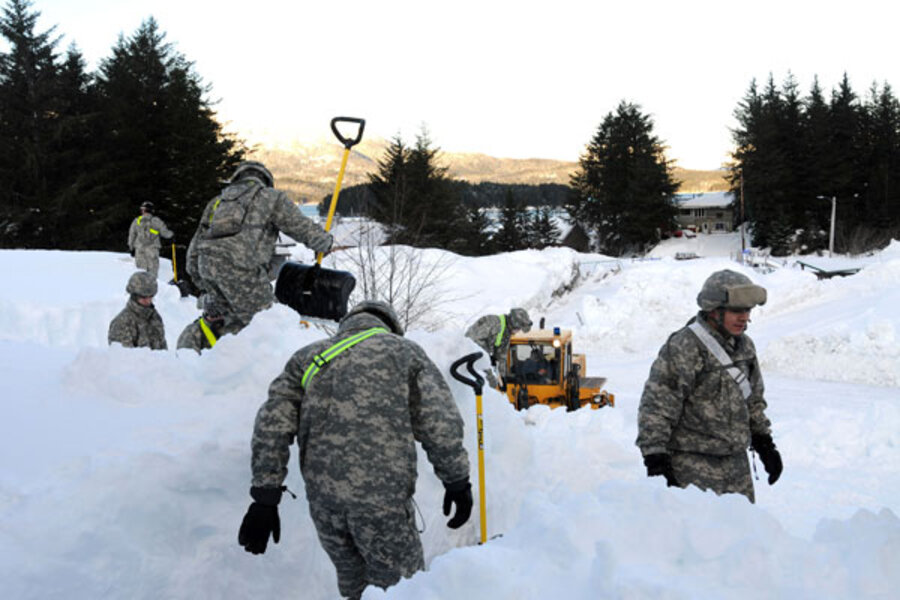Alaska's tale of two cities: one desperate for fuel, another for big shovels
Loading...
Two human dramas are continuing to unfold in the nation’s coldest state.
The tiny town of Cordova (pop. 2,300), nestled in Prince William Sound, races to dig out from “snowpocalypse,” its worst snow disaster in living memory, even as new snow falls Tuesday.
A thousand miles to the north, a Russian tanker loaded with critical supplies ekes out a path through treacherous early-season ice toward Nome, bearing the fuel necessary for the tiny hamlet’s winter survival.
Neither town is accessible by road.
While the two emergencies are very different in nature – one completely weather-driven, the second a murky mix of weather problems and human error – both can be seen as rich in lessons for a region that anticipates an increase in vessel traffic through the Bering Strait, and continued extreme winters.
“This is the first time we have ever sent an ice-clearing operation through the early ice,” says Petty Officer 1st Class David Mosley, a spokesman for the US Coast Guard operating out of Anchorage. The Coast Guard ice-breaking ship is clearing the way for the Russian vessel, averaging speeds of between 5 and 9 miles per hour.
Ice-breaking operations normally handle “old” ice, in the spring and summer, he points out, when the ice formations are more predictable.
In this unprecedented operation, the ship is tackling newly-formed ice that is “extremely dynamic,” and therefore more challenging, says Officer Mosley. “Progress under these conditions is very hard.... I’m sure we will be poring over the lessons learned from this operation for a long time.”
Across the state in Cordova, after 24 straight days of hard snowfall, city officials declared an emergency, and on Friday mounted the first-ever incident command center, complete with a public information officer, a logistics point-person, and a finance officer. Within 19 hours, 57 National Guardsmen were mustered from Anchorage while graders and snow-melting machinery arrived via barges.
Surprising even themselves, says public information officer Allen Marquette, the clean-up effort "has been an amazingly smooth, well-oiled response to a genuine emergency.”
“Our biggest problem is finding more shovels,” says Mr. Marquette. While the large, snow-clearing machinery is hardy “regular shovels break,” and as the town is accessible only by air or sea, “bringing in that sort of equipment is harder to do,” he says.
Another problem is that snow dumps are maxed out so there is an effort under way to melt the snow, Marquette says. But he can tell by looking out his window that the wind and snow are starting to pick up.
Marquette is quick to point out that because of the well-coordinated effort, there have been no fatalities or serious injuries. He credits the extensive training exercises his town has undertaken over the past several years. Under guidance from Homeland Security, the town has run through scenarios such as a massive plane crash, with nearly half the residents playing victims.
Twenty of the National Guardsmen helping dig out are being housed at the Reluctant Fisherman Inn in Cordova. Owner Greg Meyer says the official response to the crisis couldn’t have been better. “For a town of our size, it’s pretty amazing to have such an efficient response,” he says.
Cordova also benefited from the presence of Guardsman from all over the sate being in nearby Anchorage for a drill status weekend, says Major Guy Hayes of the National Guard in Anchorage. But the increased cooperation between Homeland Security and small towns such as Cordova has been steadily building. It helps that his office is headquartered in the same building as Homeland Security. Each time an emergency comes up, he says, “everyone learns more.”







